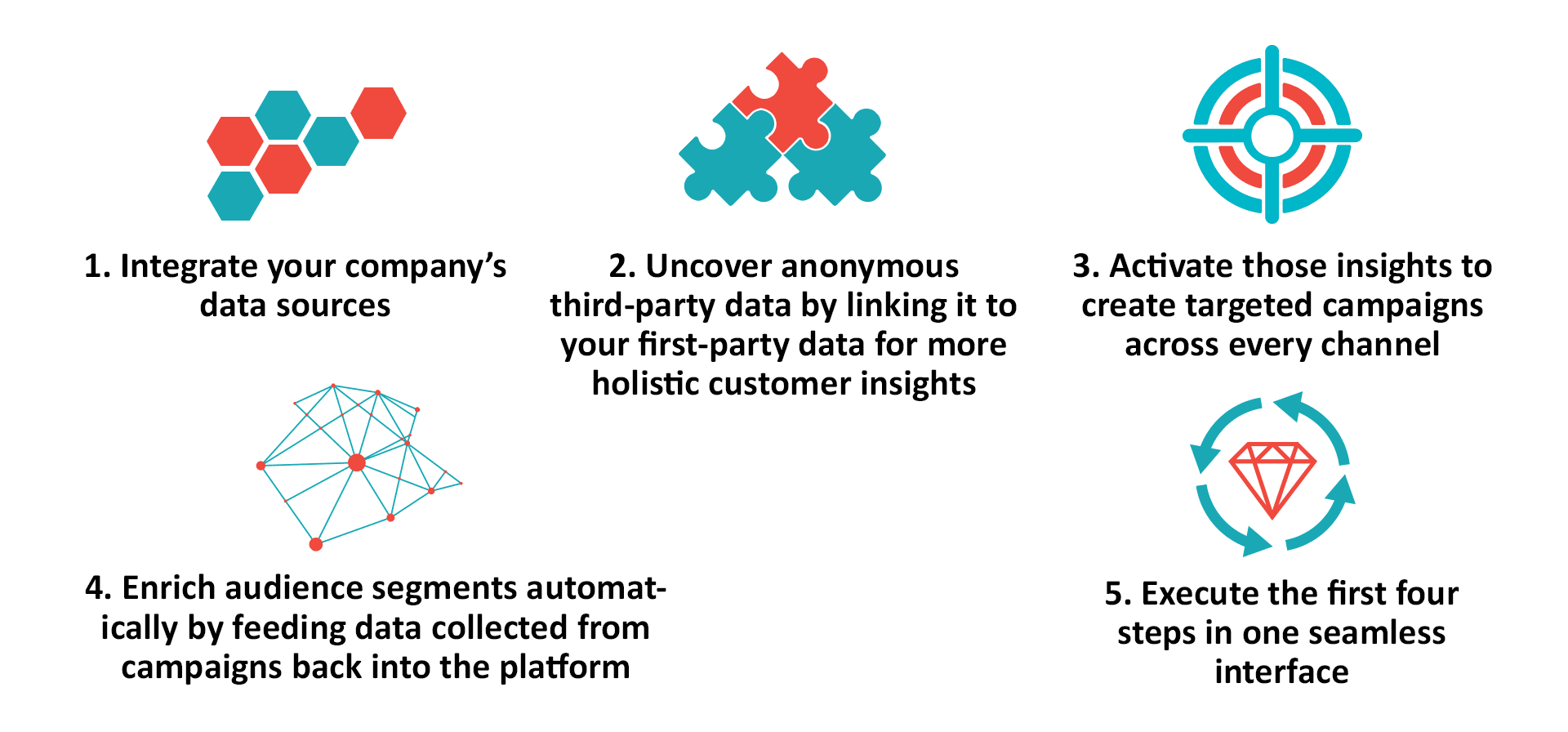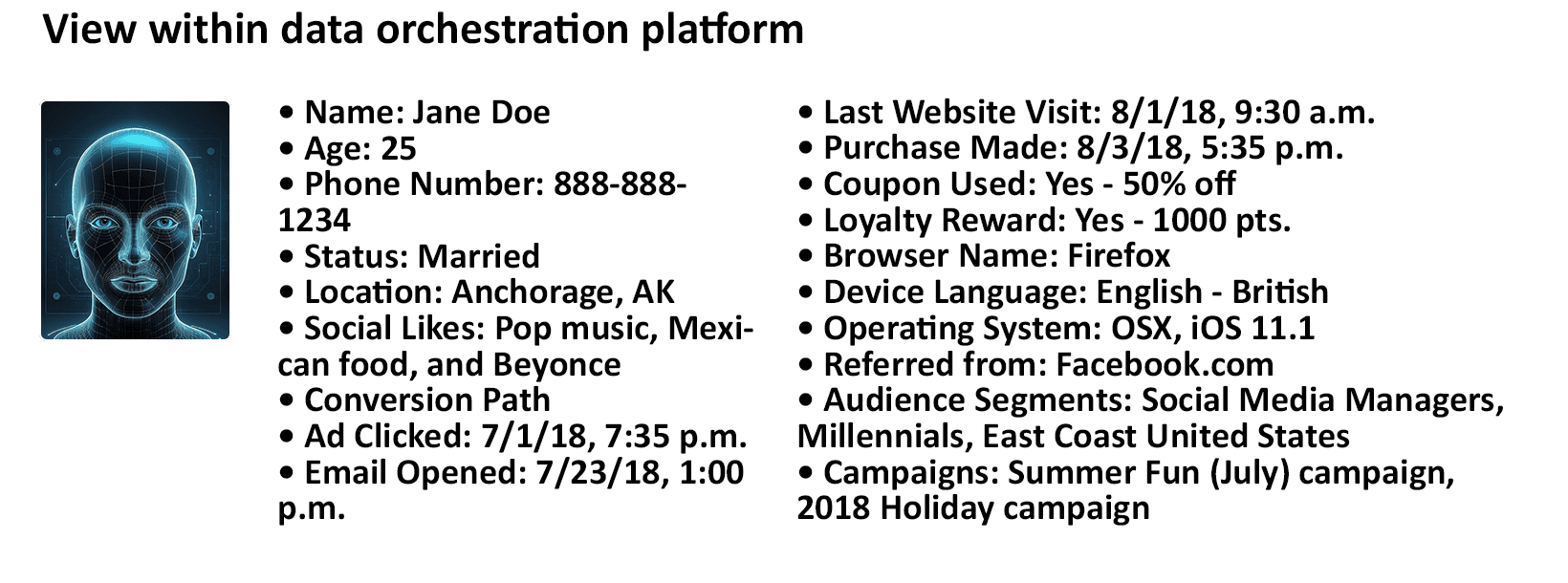
B2C Guide to Data Orchestration: How it Works & Why it Can Help You Do More With Your Data
Introduction
The modern digital landscape is a complicated one. Whether it’s the issue of how to manage massive amounts of data, an increased focus on consumer privacy, or the general shift in customer preferences toward personalization, keeping up with the evolution of the digital space is a challenge for small businesses and Fortune 1000 companies alike.
With exabytes of data produced per person each day and the expected annual world data total to continue to rise, an urgent question is emerging: how can companies leverage data effectively to drive more personalized marketing experiences? According to Forrester, less than 0.5% of all data is ever analyzed and used, and yet, “just a 10% increase in data accessibility can result in more than $65 million additional net income for a typical Fortune 1000 company.”
In order for companies to create meaningful connections with consumers, they need one place to unify, organize, and launch their data to truly understand the nuances of their customers, what messaging is and isn’t working, and how they can create more relevant marketing experiences that improve ROI. That’s why data orchestration is so important.
But what is it?
Simply put, data orchestration is the ability for brands to organize and leverage their own data to better connect with customers and make better business decisions.
As brands increasingly use third-party platforms to run their marketing campaigns (relying on anonymous third-party segments as a result), making sense of first-party data is more important than ever when it comes to competitive differentiation. After all, if everyone’s using the same segments to target the same people without background on who they really are, it’s safe to say that no one’s campaigns are giving consumers truly personalized experiences.
This is where a data orchestration platform comes in. A platform that orchestrates your data allows you to do the following:

In order for companies to keep up with the tech giants and evolving customer data habits, they must be prepared to orchestrate their own data. By doing this, companies can begin to overcome the challenges of data fragmentation and disjointed technology integrations, which, if left unresolved, lead to poor customer experiences and bad business decisions.
With an increase in relevant marketing channels, it’s imperative that companies home in on their own data or risk missing opportunities to create meaningful brand experiences that resonate with customers. And don’t just take our word for it: 59% of companies that use comprehensive data platforms agree that it gives them a competitive advantage in their industry.
DMP versus CDP versus data orchestration
First, DMP stands for “data management platform.” While DMPs can house and manage any form of information, for marketers, they are most often used to manage cookie IDs and generate audience segments for ad targeting.
With the advent of consumer data regulations like GDPR and the decline in third-party targeting, scrutiny is mounting for the industry’s reliance on this kind of data. Additionally, most third-party data is created on other platforms outside one’s business and then aggregated to be sold by vendors, making this data darker—meaning that there isn’t always a clear answer as to where the data came from or who it belongs to. Due to how this information is acquired, as well as the question of third-party data’s accuracy, brands that rely heavily on this type of data don’t often get the targeted results they’re seeking.
That’s where CDPs come in. CDPs create a comprehensive view of customers by capturing data across varied systems (first- and third-party data and personal identifiers), linking information related to the same customer, and storing this data to track their behavior over time. The key differentiator of a CDP is that it includes personal identifiers that help marketers create more targeted messaging and track results on an individual level.
And while both DMPs and CDPs can help organize your data for better campaigns, there is substantial inconsistency from platform to platform industry-wide. Some CDPs consider audience segmentation “advanced.” Some don’t include first-party data at all. So, why not utilize a data platform that consistently manages first-party data, third-party data, audience segmentation, and much more?
That’s where a data orchestration platform comes into play. A data orchestration platform combines the best features of both DMPs and CDPs—and then some. With an emphasis on your company’s own data (and more PII), this type of platform automatically combines disparate audience touchpoints and data from a multitude of platforms to solve when, where, and how consumers are interacting with your brand—also known as identity resolution. Then, data orchestration allows you to launch cross-channel campaigns in-platform, feeding the new audience data you collect directly back into the system for continually optimized performance.



Conclusion
Data orchestration not only allows for the mixing and merging of first-party data to improve customer understanding, but it also creates a centralized place to leverage all data sources to plan, activate, and monitor campaigns seamlessly. More specifically, by centralizing all of your data and platforms in one place, your team will have a clearer understanding of how marketing activities connect.
You can see full B2C guide to data orchestration here
Share:
Got a project?
Harness the power of your data with the help of our tailored data-centric expertise.
Contact us